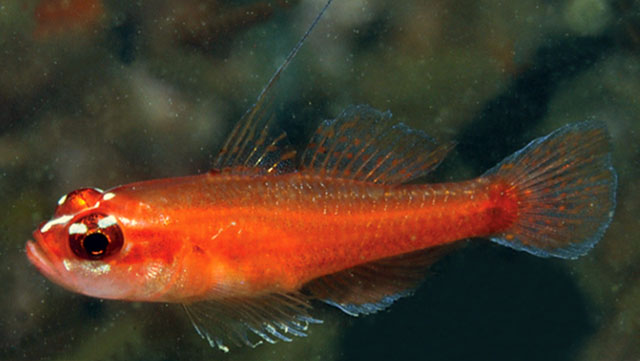| Gobiidae (Gobies), subfamily: Gobiinae |
| 2.22 cm SL (male/unsexed) |
|
reef-associated; marine; depth range - 18 m |
| Western Pacific: Papua New Guinea. |
|
Dorsal spines (total): 7-7; Dorsal soft rays (total): 9-10; Anal spines: 1-1; Anal soft rays: 8-9. This species is distinguished by the following set of characters: D VI + I,9 (rarely 10), with the second spine elongated and filamentous, reaching caudal-fin base when fully developed; A I,8 (rarely 9);the fifth pelvic ray is branched, 62-71% length of fourth pelvic ray; the bony interorbital 46-62% pupil diameter; the midline of predorsal broadly scaleless; no scales on cheek and opercle; in life mainly bright orange-red except white on breast and belly, the lower half of head, also white stripe on midline of snout in life (Ref. 100512). |
| Found in an area consisted of pieces of metal wreckage and discarded tyres on mud bottom; it either rested on the bottom or hovered in midwater in the shady recesses of the wreckage or tyres (Ref. 100512). |
|
Data deficient (DD); Date assessed: 07 September 2021 Ref. (130435)
|
| harmless |
|
Source and more info: www.fishbase.org. For personal, classroom, and other internal use only. Not for publication.

